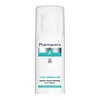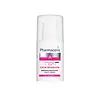What's inside
What's inside
 Key Ingredients
Key Ingredients

 Benefits
Benefits

 Concerns
Concerns

 Ingredients Side-by-side
Ingredients Side-by-side

Water
Skin ConditioningGlycerin
HumectantEthylhexyl Methoxycinnamate
UV AbsorberC12-15 Alkyl Benzoate
AntimicrobialPolyglyceryl-3 Methylglucose Distearate
EmulsifyingDicaprylyl Carbonate
EmollientEthylhexyl Triazone
UV AbsorberGlyceryl Stearate
EmollientIsopropyl Palmitate
EmollientMethyl Gluceth-20
HumectantButyl Methoxydibenzoylmethane
UV Absorber1,2-Hexanediol
Skin ConditioningCetyl Alcohol
EmollientButylene Glycol
HumectantImperata Cylindrica Root Extract
Skin ConditioningHydrogenated Olive Oil Decyl Esters
Emulsion StabilisingPEG-8
HumectantSodium Polyacrylate
AbsorbentAcrylates/C10-30 Alkyl Acrylate Crosspolymer
Emulsion StabilisingAllantoin
Skin ConditioningEthylhexylglycerin
Skin ConditioningTriethanolamine
BufferingCaprylic/Capric Triglyceride
MaskingTocopherol
AntioxidantCodium Tomentosum Extract
Skin ProtectingCarbomer
Emulsion StabilisingAscorbyl Palmitate
AntioxidantInulin
Skin ConditioningLaminaria Ochroleuca Extract
Skin ConditioningAlpha-Glucan Oligosaccharide
CleansingAscorbic Acid
AntioxidantCitric Acid
BufferingPhenoxyethanol
PreservativeWater, Glycerin, Ethylhexyl Methoxycinnamate, C12-15 Alkyl Benzoate, Polyglyceryl-3 Methylglucose Distearate, Dicaprylyl Carbonate, Ethylhexyl Triazone, Glyceryl Stearate, Isopropyl Palmitate, Methyl Gluceth-20, Butyl Methoxydibenzoylmethane, 1,2-Hexanediol, Cetyl Alcohol, Butylene Glycol, Imperata Cylindrica Root Extract, Hydrogenated Olive Oil Decyl Esters, PEG-8, Sodium Polyacrylate, Acrylates/C10-30 Alkyl Acrylate Crosspolymer, Allantoin, Ethylhexylglycerin, Triethanolamine, Caprylic/Capric Triglyceride, Tocopherol, Codium Tomentosum Extract, Carbomer, Ascorbyl Palmitate, Inulin, Laminaria Ochroleuca Extract, Alpha-Glucan Oligosaccharide, Ascorbic Acid, Citric Acid, Phenoxyethanol
Water
Skin ConditioningPentylene Glycol
Skin ConditioningIsononyl Isononanoate
EmollientGlycerin
HumectantCaprylic/Capric Triglyceride
MaskingCyclopentasiloxane
EmollientDimethicone
EmollientCetyl Alcohol
EmollientIsopropyl Isostearate
EmollientHydrogenated Olive Oil Decyl Esters
Emulsion StabilisingPotassium Cetyl Phosphate
EmulsifyingCanola Oil
EmollientCyclohexasiloxane
EmollientPanthenol
Skin ConditioningLonicera Caprifolium Flower Extract
PerfumingAllantoin
Skin ConditioningLonicera Japonica Flower Extract
Skin ConditioningTimonacic
Skin ConditioningOlea Europaea Leaf Extract
PerfumingAscorbic Acid
AntioxidantZiziphus Jujuba Seed Extract
Skin ConditioningCalcium Hydroxide
BufferingAcetyl Tetrapeptide-40
Skin ConditioningPolysilicone-11
Ribes Nigrum Seed Oil
EmollientCaprylyl Glycol
EmollientSodium Polyacrylate
AbsorbentAcrylates/C10-30 Alkyl Acrylate Crosspolymer
Emulsion StabilisingTromethamine
BufferingBHA
AntioxidantDecyl Glucoside
CleansingFructan
Skin ConditioningCitric Acid
BufferingPhenethyl Alcohol
MaskingWater, Pentylene Glycol, Isononyl Isononanoate, Glycerin, Caprylic/Capric Triglyceride, Cyclopentasiloxane, Dimethicone, Cetyl Alcohol, Isopropyl Isostearate, Hydrogenated Olive Oil Decyl Esters, Potassium Cetyl Phosphate, Canola Oil, Cyclohexasiloxane, Panthenol, Lonicera Caprifolium Flower Extract, Allantoin, Lonicera Japonica Flower Extract, Timonacic, Olea Europaea Leaf Extract, Ascorbic Acid, Ziziphus Jujuba Seed Extract, Calcium Hydroxide, Acetyl Tetrapeptide-40, Polysilicone-11, Ribes Nigrum Seed Oil, Caprylyl Glycol, Sodium Polyacrylate, Acrylates/C10-30 Alkyl Acrylate Crosspolymer, Tromethamine, BHA, Decyl Glucoside, Fructan, Citric Acid, Phenethyl Alcohol
Ingredients Explained
These ingredients are found in both products.
Ingredients higher up in an ingredient list are typically present in a larger amount.
Acrylates/C10-30 Alkyl Acrylate Crosspolymer is a synthetic polymer. It is used to thicken and improve the texture of products. Due to its properties, it can prevent water and oil ingredients from separating.
Allantoin is a soothing ingredient known for its protective and moisturizingg properties. Because of this, it is often added to products with strong active ingredients.
Studies show higher concentrations of this ingredient can promote wound healing.
Though it can be derived from the comfrey plant, allantoin is produced synthetically for cosmetic products to ensure purity.
Learn more about AllantoinAscorbic Acid is is pure Vitamin C. This form makes up the largest amount of vitamin C found naturally in our skin.
Not only is vitamin C great for your overall health and immune system, it also has plenty of benefits on your skin.
Vitamin C is best used for brightening skin. It improves dark spots, acne scars, and hyperpigmentation. This is because it blocks the process of skin darkening when exposed to UV.
Remember: Vitamin C should not replace sunscreen!
Your skin uses vitamin C to build collagen. Collagen is one key component in having a strong skin barrier and plump skin. Vitamin C also plays a role in regulating collagen, thus making it effective in improving wrinkles and fine lines.
Ascorbic acid shows potent antioxidant activity. As an antioxidant, it helps fight free-radicals. Free-radicals are molecules that may damage your skin cells. These antioxidants also protect skin against UV damage.
The best formulations include Vitamin E and/or ferulic acid. These two ingredients help stabilize and provide a boost in the benefits of ascorbic acid. This is because ascorbic acid becomes unstable when exposed to UV and air. In fact, you can tell your ascorbic acid has oxidized when it turns an orange-yellow color.
Ascorbic acid is generally compatible with other ingredients. However, using ascorbic acid with other active ingredients might cause irritation. Two ingredients: copper ions and benzoyl peroxide, will inactivate ascorbic acid completely.
Read more about other types of Vitamin C:
Foods rich with vitamin C include oranges, strawberries, broccoli, bell peppers, and more. When consuming Vitamin C, your skin receives a portion of the nutrients.
Learn more about Ascorbic AcidThis ingredient is an emollient, solvent, and texture enhancer. It is considered a skin-softener by helping the skin prevent moisture loss.
It helps thicken a product's formula and makes it easier to spread by dissolving clumping compounds.
Caprylic Triglyceride is made by combining glycerin with coconut oil, forming a clear liquid.
While there is an assumption Caprylic Triglyceride can clog pores due to it being derived from coconut oil, there is no research supporting this.
Learn more about Caprylic/Capric TriglycerideCetyl Alcohol is a fatty alcohol. Fatty Alcohols are most often used as an emollient or to thicken a product.
Its main roles are:
Though it has "alcohol" in the name, it is not related to denatured alcohol or ethyl alcohol.
The FDA allows products labeled "alcohol-free" to have fatty alcohols.
Learn more about Cetyl AlcoholCitric Acid is an alpha hydroxy acid (AHA) naturally found in citrus fruits like oranges, lemons, and limes.
Like other AHAs, citric acid can exfoliate skin by breaking down the bonds that hold dead skin cells together. This helps reveal smoother and brighter skin underneath.
However, this exfoliating effect only happens at high concentrations (20%) which can be hard to find in cosmetic products.
Due to this, citric acid is usually included in small amounts as a pH adjuster. This helps keep products slightly more acidic and compatible with skin's natural pH.
In skincare formulas, citric acid can:
While it can provide some skin benefits, research shows lactic acid and glycolic acid are generally more effective and less irritating exfoliants.
Most citric acid used in skincare today is made by fermenting sugars (usually from molasses). This synthetic version is identical to the natural citrus form but easier to stabilize and use in formulations.
Read more about some other popular AHA's here:
Learn more about Citric AcidGlycerin is already naturally found in your skin. It helps moisturize and protect your skin.
A study from 2016 found glycerin to be more effective as a humectant than AHAs and hyaluronic acid.
As a humectant, it helps the skin stay hydrated by pulling moisture to your skin. The low molecular weight of glycerin allows it to pull moisture into the deeper layers of your skin.
Hydrated skin improves your skin barrier; Your skin barrier helps protect against irritants and bacteria.
Glycerin has also been found to have antimicrobial and antiviral properties. Due to these properties, glycerin is often used in wound and burn treatments.
In cosmetics, glycerin is usually derived from plants such as soybean or palm. However, it can also be sourced from animals, such as tallow or animal fat.
This ingredient is organic, colorless, odorless, and non-toxic.
Glycerin is the name for this ingredient in American English. British English uses Glycerol/Glycerine.
Learn more about GlycerinHydrogenated Olive Oil Decyl Esters is an oil and isn't fungal acne safe.
Sodium Polyacrylate is the sodium salt of polyacrylic acid. It is used as an absorber, emollient, and stabilizer.
This ingredient is a super-absorbent polymer - meaning it can absorb 100 to 1000 times its mass in water. As an emollient, Sodium Polyacrylate helps soften and soothe skin. Emollients work by creating a barrier to trap moisture in. This helps keep your skin hydrated.
Water. It's the most common cosmetic ingredient of all. You'll usually see it at the top of ingredient lists, meaning that it makes up the largest part of the product.
So why is it so popular? Water most often acts as a solvent - this means that it helps dissolve other ingredients into the formulation.
You'll also recognize water as that liquid we all need to stay alive. If you see this, drink a glass of water. Stay hydrated!
Learn more about Water